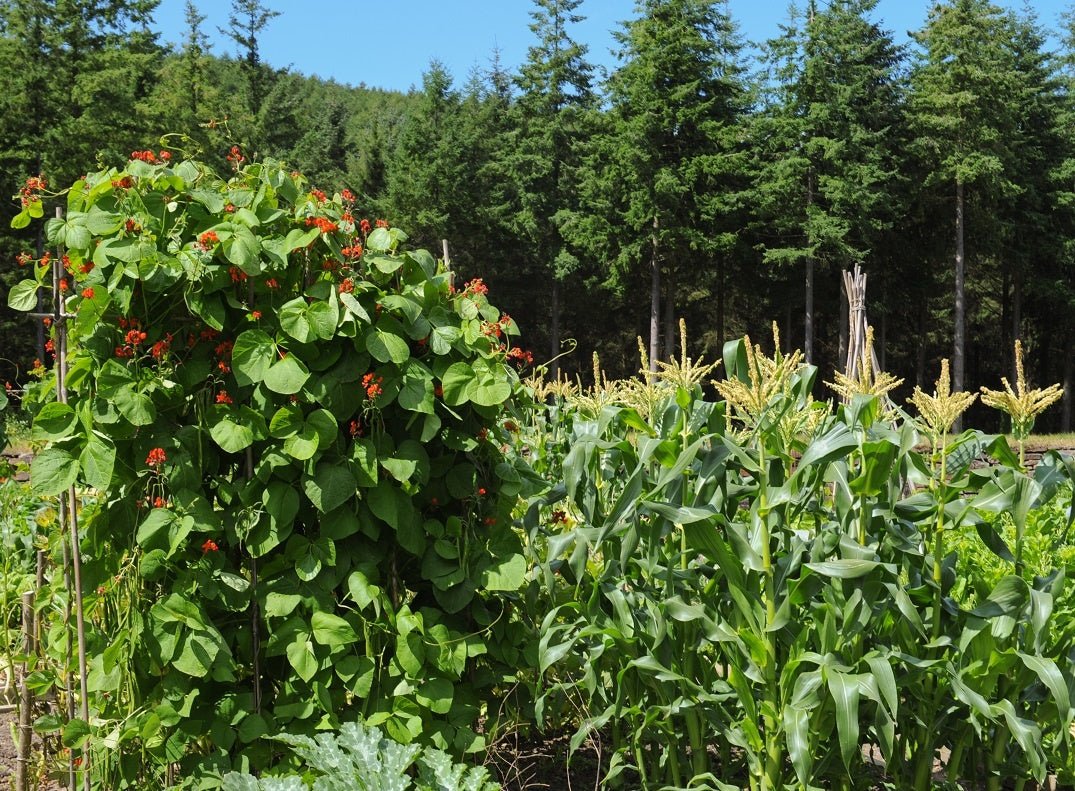
How to Plant a Three Sisters Garden
Thousands of years ago, corn, beans, and squash grew together in the wild in Mesoamerica, near today’s Oaxaca, Mexico. They had a symbiotic relationship with each plant benefitting the others. As agriculture replaced the hunter-gatherer way of life, the indigenous people domesticated these and many other plants for food, medicine, and livestock feed.
n
Thousands of years ago, corn, beans, and squash grew together in the wild in Mesoamerica, near today’s Oaxaca, Mexico. They had a symbiotic relationship with each plant benefitting the others. As agriculture replaced the hunter-gatherer way of life, the indigenous people domesticated these and many other plants for food, medicine, and livestock feed.
Seed was exchanged for other supplies over a vast system of trade routes and trading centers throughout the Americas. Over many millennia, corn, bean, and squash seed found its way north, continually being adapted to local growing conditions. They had been grown together for thousands of years, but the Haudenosaunee (Iroquois) named this planting combination ‘The Three Sisters’. The legend tells the story of the strength of three indigenous sisters when they live together.
Not only do these plants complement each other in the field, they provide a balanced diet for people, too. Corn provides carbohydrates, beans are high in protein and amino acids that complement those in corn, and squash has vitamins and minerals that the other two don’t possess. Many indegenous dishes, like succotash, use these foods together to create a nutritionally complete meal.
Companion planting
Some plants are beneficial to each other, and do well when planted together. (On the flip side, others are detrimental to each other, but that's a post for another day!) Companion planting means interplanting crops that help each other, which is the science and ecology behind The Three Sisters. The height of the corn supports the bean vines, which tie the corn stalks together for added stability. Beans fix nitrogen, which means they take it from the air and transfer it to the soil, making it an available nutrient. The beans feed the corn and squash, which are heavy nitrogen users. The large leaves of the squash plants act as a groundcover to provide shade, conserve moisture, and suppress weeds. Their prickly stems also deter predators.How to plant a Three Sisters garden
There are a few different ways to plant the three sisters in your organic garden, but what you choose will depend on how much space you have. I will describe the simplest version here, although that link shows a much bigger garden. No matter which method you use, not all of it will be planted at once. Be sure to choose a tall corn variety, a pole bean, and a bush squash. Make a raised mound of good soil in your garden 36” across. Level the top, and plant 5-6 corn seeds in a 6” diameter circle in the center. About 2-3 weeks later, when the corn is 6” tall, plant your pole beans in a circle 3”-6” out from the corn. About a week later, plant your squash seeds around the sides of the mound. Use regular spacing, and thin to the strongest plants. Leave four corn plants, because they need each other for pollination. Pull weeds until the plants are large enough to smother them. This design will provide you with plenty of food! If you have the space, plant several of these mounds in staggered rows. Find more configurations on this page from Native Seeds/SEARCH. You can also experiment with sunflowers instead of corn, and vining squashes or pumpkins. The vines would need to be trained away from the center so as not to stress the cornstalks, and to get the most sun for best production. When you plant a Three Sisters garden, you are improving your soil and practicing ancient growing methods. Read about growing an authentic Native American garden, by William Woys Weaver. And always appreciate the farmers that have gone before you.Would you like to be the first to hear about our new products and more? Sign up for our Nature’s Path Newsletter.

